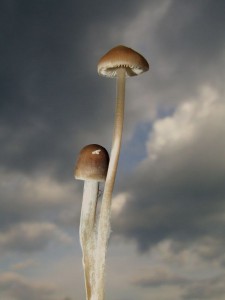
I’m lucky, I don’t have allergies. Or I rarely have allergies. Or really the things that I’m allergic to, I rarely find myself around. It turns out I am allergic to some things. Like penicillin. But how often do I accidentally maim myself, get sepsis and require antibiotics? Rarely.
I’m also allergic to wheat. No not the whole gluten thing, even though, yes I live in the gluten-free mecca of Northern California. It’s actually wheat pollen that I’m allergic to. We are talking waterfalls-of-snot allergic. Fortunately I live in an urban environment and though people do try to dress it up with gardens overflowing with puyas and bananas, I’ve yet to run into a wheat field out here.
The last thing I’m allergic to? Mold. This allergy is worse than the others because rather than breaking out into a million little red pin-prick dots (penicillin) or losing 10 pounds in water-weight through my nose and eyes (wheat pollen), the mold gives me something called a kennel cough. You know the kennel cough, it’s the cough your dog gets after coming back from 2 weeks at the kennel. While you were happily jaunting around the Caribbean, your little pooch was stuck in a cell with another pooch or many pooches and returns with something that sounds like this “cough *pause* cough *pause* cough….” And so on. It’s light, it’s cheery, it’s annoying as hell and it never goes away.
The first two allergies (penicillin and wheat pollen), I can do a pretty good job of avoiding. But the last, mold, it turns out is nearly impossible to avoid now than ever before and this has everything to do with climate change.
Now this is probably what you are thinking, “Well, d’uh, climate change alters the climate, therefore precipitation (i.e. rain) and flooding risks, which molds tend to love, so like that must be what she is talking about. Case closed.” But that would make this blog the monograph of boring. Because, like d’uh.
Did it ever occur to you that molds might actually respond to changes in atmospheric carbon dioxide levels? Of course not; they don’t photosynthesis like plants do, so how could CO2 ever have an effect?
Aha, but it does. In fact, increases in carbon dioxide since the industrial revolution have increased the allergenicity (or the allergic-ness, as non-nerds would call it) of a specific mold: Aspergillus fumigatus.
This mold is particularly nasty because:
1. Its spores are everywhere all the time, you are probably inhaling 100 spores right now with each breath as you read this (for the love of god, don’t gasp!!) and
2. It’s the sucker that is responsible for fungal diseases that take down folks who are immunosuppressed. Also, I’m told that if you have asthma, this mold sucks.
So, like, not our favorite fungi.
But not all is lost in the future, because it turns out that we are at the peak for the allergenicity, and as CO2 continues to go up over the next 30 years and then 50 years and then 100 years (because let’s face it, you just are never going to walk anywhere, are you??) the allergenicity (remember, allergic-ness) actually goes down. So it looks like we’ve hit a peak right now that may go down with more carbon dioxide.
The direct effect of CO2 on this mold isn’t the whole story; in fact it’s only the first part. As you know from reading my blog, changes in carbon dioxide levels in the atmosphere have all sorts of impacts on plant communities and internal chemistry of plants. One of the things it can do is increase the proportion of carbon in the plant, so when the plant dies there is a more carbon-rich substrate for the decomposers (i.e. molds) to enjoy.
Turns out that our friendly fungus, Aspergillus fumigatus, is once again there to enjoy this carbon-rich substrate, and boy does it love it. Yes, the carbon-rich substrate makes the mold more allergenic again. The same goes when a little extra nitrogen is added to the substrate. (How would this ever happen in the real world? I don’t know, do you fertilize your garden?)
So, we appear to be at a bit of a peak right now of allergenicity with this one fungus, and it may be the same for others. This of course is not unique to allergens, as we know how increases in CO2 impact ragweed and other itchy, sneezy things that make you go “achoo” in the night.
I’m not too worried about it though, as I said in last week’s post, I live in the mecca of alternative health therapies – there must be something for all this darn mold…maybe a bleach tonic?
Further Reading:
Changes in atmospheric CO2 influence the allergenicity of Aspergillus fumigatus